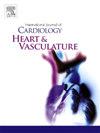打破界限:高危患者的替卡格雷单药治疗
IF 2.5
Q2 CARDIAC & CARDIOVASCULAR SYSTEMS
引用次数: 0
摘要
动脉粥样硬化斑块的形成是动脉血栓形成的主要原因,它通过引发心肌梗塞(MI)和中风等重大不良心血管事件(MACE)而对全球健康产生重大影响。血小板是这一过程的核心,因此开发了抗血小板疗法,以降低 MACE 风险。阿司匹林与强效 P2Y12 抑制剂的组合称为双重抗血小板疗法(DAPT),是经皮冠状动脉介入治疗(PCI)后的标准疗法,旨在减少缺血性事件的发生。然而,DAPT 有相关的出血风险,尤其是对高出血风险(HBR)患者,因此需要采取平衡的方法来优化治疗效果。最近的研究进展促使人们开始探索替卡格雷单药治疗,将其作为短期 DAPT 后降低出血风险同时保持缺血保护的一种有前途的策略。本综述手稿重点介绍了针对 HBR 患者的替卡格雷单药治疗,并讨论了最佳时机、患者选择和治疗持续时间。它强调了替卡格雷在不同患者亚群中的广泛疗效,并概述了其优于阿司匹林(ASA)和氯吡格雷单一疗法的特点。TICO、TWILIGHT、GLOBAL LEADERS 和 ULTIMATE-DAPT 等试验以及文献荟萃分析证实了替卡格雷单药疗法与传统 DAPT 相比在降低死亡率和临床不良事件方面的作用。该综述支持个性化治疗方案,即先使用 DAPT,然后再使用替卡格雷单药治疗,以此作为一种平衡的方法来管理PCI后急性冠脉综合征(ACS)患者的出血和缺血风险,尤其是那些面临较高出血威胁的患者。本文章由计算机程序翻译,如有差异,请以英文原文为准。
Breaking boundaries: Ticagrelor monotherapy in high-risk patients
Atherosclerotic plaque formation is a leading cause of arterial thrombosis that significantly impacts global health by instigating major adverse cardiovascular events (MACE) like myocardial infarction (MI) and stroke. Platelets are central to this process, leading to the development of antiplatelet therapies, to mitigate MACE risks. The combination of aspirin with a potent P2Y12 inhibitor known as dual antiplatelet therapy (DAPT) is the standard for post-percutaneous coronary intervention (PCI) aimed at reducing ischemic events. However, DAPT’s associated bleeding risks, particularly in high bleeding risk (HBR) patients, require a balanced approach to optimize therapeutic outcomes. Recent advancements have led to the exploration of ticagrelor monotherapy as a promising strategy after short-term DAPT to reduce bleeding risks while preserving ischemic protection. This review manuscript focuses on ticagrelor monotherapy for HBR patients with discussion on optimal timing, patient selection, and treatment duration. It highlights ticagrelor’s broad efficacy in diverse patient sub-groups and outlines its superiority over aspirin (ASA) and clopidogrel monotherapies. Trials such as TICO, TWILIGHT, GLOBAL LEADERS, and ULTIMATE-DAPT as well as literature meta-analyses validate ticagrelor monotherapy’s role in lowering mortality and clinical adverse events versus conventional DAPT. The review endorses a personalized treatment regimen, beginning with DAPT before moving to ticagrelor monotherapy, as a balanced method for managing both bleeding and ischemic risks in post-PCI acute coronary syndrome (ACS) patients, especially those facing higher bleeding threats.
求助全文
通过发布文献求助,成功后即可免费获取论文全文。
去求助
来源期刊

IJC Heart and Vasculature
Medicine-Cardiology and Cardiovascular Medicine
CiteScore
4.90
自引率
10.30%
发文量
216
审稿时长
56 days
期刊介绍:
IJC Heart & Vasculature is an online-only, open-access journal dedicated to publishing original articles and reviews (also Editorials and Letters to the Editor) which report on structural and functional cardiovascular pathology, with an emphasis on imaging and disease pathophysiology. Articles must be authentic, educational, clinically relevant, and original in their content and scientific approach. IJC Heart & Vasculature requires the highest standards of scientific integrity in order to promote reliable, reproducible and verifiable research findings. All authors are advised to consult the Principles of Ethical Publishing in the International Journal of Cardiology before submitting a manuscript. Submission of a manuscript to this journal gives the publisher the right to publish that paper if it is accepted. Manuscripts may be edited to improve clarity and expression.
 求助内容:
求助内容: 应助结果提醒方式:
应助结果提醒方式:


